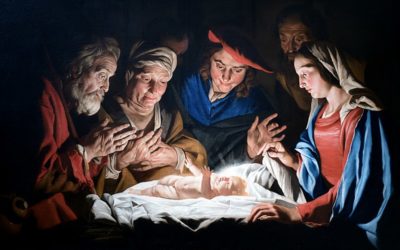On the evening of September 21, 1823, Joseph Smith felt burdened for the sins of his teenage life. He was seventeen and regretted his “many foolish errors,” “the weakness of youth,” “the foibles of human nature,” and the “diverse” sins he had committed that were “offensive in the sight of God.” (Joseph Smith—History 1:27‒28). In short, he felt the way teenagers often feel at that point in their lives.
He slept with his brothers in the loft of his family’s small log home south of Palmyra, New York. That evening, as his brothers fell asleep one by one around him, Joseph prayed to God, seeking once again forgiveness for his sins and a confirmation that he could still fulfill the mission the Lord had explained to him during his First Vision three and a half years earlier.
The result of this prayer was a series of interviews with an angel named Moroni, who spent the entire night instructing him. Readers often breeze through the description of these visions in Joseph Smith—History 1:27‒65, focusing just on the part in which Moroni directs him to find the gold plates from which Joseph later translated the Book of Mormon. But there was much more to the visions than that.
Latter-day Saints today are accustomed to prophets who have spent most of their lives in the Church, who have a better-than-average education, who have spent their lives studying the scriptures and Church handbooks, who have the maturity and experience of senior citizens, who have many decades of Church service under their belt, and who have been mentored for decades by other prophets.
During his short life of thirty-eight years, Joseph Smith had none of that. He was a first-generation convert who spent just a little more than a third of his life—fourteen years—as a Church member. He had an average education for his day, but one that would be considered poor by today’s standards. According to his mother, he was less inclined to reading than the other children in his family. He had no senior Church leaders to mentor him, no handbooks to follow, and only the experience of youth and middle age to guide him.
What he did have, however, was angelic teachers and mentors. One of these was Moroni, who used his visits to the young prophet as teaching opportunities. Joseph’s descriptions of his visits from Moroni are packed with information that most readers just blow past. Consider, for example, verses 36 through 40 of Joseph Smith—History. If you carefully read the passages in question, you will realize they contain important information about family history and temple work.
As the first prophet of the last dispensation, Joseph was responsible not only for the people living on earth in his day or those who would live after his day. He was also responsible for all the people who had ever lived on earth. In short, he was responsible for the salvation of all humanity, all men, women, and and children who then lived or would ever live.
During Joseph’s short lifetime, the Lord would reveal the keys, principles, and ordinances of temple work—baptisms, endowments, and sealings—that would occupy the Church and its peoples for the rest of time and into the Millennium. This is one reason that Doctrine and Covenants 135:3 says, “Joseph Smith, the Prophet and Seer of the Lord, has done more, save Jesus only, for the salvation of men in this world, than any other man that ever lived in it.”
It was a message that not only would be relevant to Joseph in his role as a prophet, but also in his role as a family member. Just weeks after Moroni’s first visits, Joseph would lose his brother Alvin, a death that broke his boyish heart. During his short life, he would lose several children, his father, and other relatives and friends. For more information on how Moroni’s visit began an outpouring of revelation on temple and family history work, read “Latter-day Saint Doctrine of Baptism for the Dead,” BYU Family Historian 1, article 6 (2002).
And the next time you see a statue of Moroni on top of a temple, think of his first visit to Joseph Smith.



